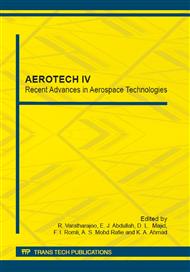[1]
Graves Smith, T.R., "The ultimate strength of locally buckled columns of arbitrary length", PhD Thesis, Fitzwilliam College, University of Cambridge, 1966.
Google Scholar
[2]
Graves Smith, T.R., "The local buckling of box girders under bending stresses", Int. J. mech. Sci. Pergamon Press, Vol. 11 (1969) pp.603-612.
DOI: 10.1016/0020-7403(69)90059-9
Google Scholar
[3]
Graves Smith, T.R., "The effect of initial imperfections on the strength of thin-walled box columns", Int. J. mech. Sci. Pergamon Press, Vol. 13 (1971) pp.911-925.
DOI: 10.1016/0020-7403(71)90077-4
Google Scholar
[4]
Graves Smith, T.R., "The post-buckled behaviour of a thin-walled box beam in pure bending", Int. J. mech. Sci. Pergamon Press, Vol. 14 (1972) pp.711-722.
DOI: 10.1016/0020-7403(72)90009-4
Google Scholar
[5]
Ovesy, H.R., Loughlan, J. & Ghannadpour, S.A.M., "Geometric non-linear analysis of channel sections under end shortening, using different versions of the finite strip method", Computers and Structures 84 (2006) 855-872.
DOI: 10.1016/j.compstruc.2006.02.010
Google Scholar
[6]
Ovesy, H.R., Loughlan, J., Ghannadpour, S.A.M. & Morada, G., "Geometric non-linear analysis of box sections under end shortening, using three different versions of the finite-strip method", Thin-Walled Structures 44 (2006) 623-637.
DOI: 10.1016/j.tws.2006.05.006
Google Scholar
[7]
Ovesy, H.R., Loughlan, J. & Ghannadpour, S.A.M., "An Investigation on the Geometric Non-Linear Analysis of I-Section Struts using the Finite Strip Method", 6th International Conference on Steel and Aluminium Structures, Oxford, 24-27 July, 2007, pp.348-355.
DOI: 10.1016/j.compstruc.2006.02.010
Google Scholar
[8]
Ovesy, H.R., Loughlan, J. & Ghannadpour, S.A.M., "An investigation on the post-buckling analysis of I-section struts using finite strip method", Int. J. of Adv. Steel Construction, 2008.
DOI: 10.4203/ccp.93.199
Google Scholar
[9]
Ghannadpour, S.A.M. & Ovesy, H.R., "Exact post-buckling stiffness calculation of box section struts", Engineering Computations: International Journal for Computer Aided Engineering and Software, 2009;26(7):868–93.
DOI: 10.1108/02644400910985224
Google Scholar
[10]
Ovesy, H.R., Loughlan, J. & Assaee, H., "The compressive post-local buckling behaviour of thin plates using a semi-energy finite strip approach", Thin-Walled Structures 42 (2004) 449-474.
DOI: 10.1016/s0263-8231(03)00106-x
Google Scholar
[11]
Ovesy, H.R., Loughlan, J. & Ghannadpour, S.A.M., "Geometric non-linear analysis of thin flat plates under end shortening, using different versions of the finite strip method", Int. J. mech. Sci. 47 (2005) 1923-1948.
DOI: 10.1016/j.ijmecsci.2005.07.008
Google Scholar
[12]
Loughlan, J., Yidris, N. & Cunningham, P.R., "The effects of local buckling and material yielding on the axial stiffness and failure of uniformly compressed I-section and box-section struts", Thin-Walled Structures 49 (2011) 264 – 279.
DOI: 10.1016/j.tws.2010.11.004
Google Scholar


